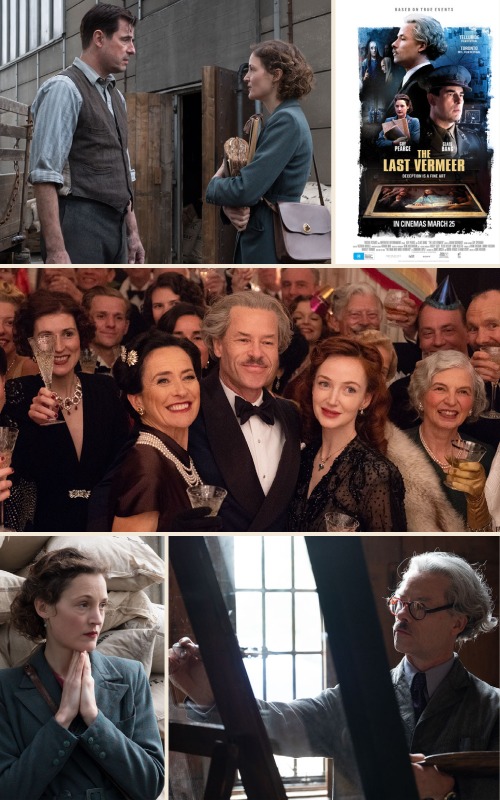 THE LAST VERMEER. Starring: Guy Pearce, and Claes Bang. Also starring Vicky Krieps, Roland Moller, and Olivia Grant. Directed by Dan Friedkin. Rated M (Mature themes, violence and coarse language). 118 min.
THE LAST VERMEER. Starring: Guy Pearce, and Claes Bang. Also starring Vicky Krieps, Roland Moller, and Olivia Grant. Directed by Dan Friedkin. Rated M (Mature themes, violence and coarse language). 118 min.
This American historical, crime drama is based on the book, The Man Who Made Vermeer, published in 2008 by Jonathan Lopez. It tells the story of an art forger who defrauded the Nazis of millions of dollars. The film mixes fact and fiction, and is set in Amsterdam shortly after the fall of the Third Reich.
History shows that Dutch folk hero, Han van Meegeren (Pearce) sold forgeries of paintings and became suspected of conspiring with the Nazis in World War II. He was investigated by a Jewish soldier, and former freedom fighter, Captain Joseph Piller (Bang), who was a Dutch Resistance Officer. Assigned to investigate the case by the Allies, Piller came to believe in Han’s innocence, and found himself having to solve the conflict of wanting to save the life of a person, whom others thought guilty, and someone he was under orders to investigate.
Townspeople willingly supported any efforts by their government to track down people who conspired with the Nazis. This is a film that attempts to combine the thriller elements of war-time encounters and intrigue, with aesthetic appreciation of the art of famous painters. In the present film, the artist under scrutiny is the Dutch master-painter, Johannes Vermeer.
Van Meegeren attempted to sell a painting, “Christ and the Adulteress”, which he said was by Vermeer, and art critics enthusiastically supported his opinion. It was painted by himself, and he sold it to Adolf Hitler’s second-in-command, Hermann Goring. Goring was known to be a keen collector of fine art, and a person who was willing to pay whatever was necessary to own it.
When van Meegeren was arrested for conspiring with the Nazis and put on trial, Joseph Piller defended him in court. Piller was exasperated by van Meegeren’s evasiveness, but believed that van Meegeren was innocent. The moral core of the film rests firmly with Piller as he tries to navigate the issue of finding the truths that lie behind van Meegeren’s colourful life and egotistical utterances.
The themes that the film addresses are substantial and varied, and different emotions accompany them. They touch on the difficulties of addressing true artistic worth, the pressure not to pursue justice because it accords with public opinion, the separation of truth and fact, the exploration of artistic creativity, how true art is properly valued, and when does a judgment of criminality need to be redefined. The plotline is further complicated by the difficulty Piller found in accepting his own wife’s undercover work during the war, and van Meegeren’s acute disdain for an art world that completely shunned him as a painter.
The film is handsomely produced. Its cinematography is atmospheric. Its costuming is excellent; and the acting is vibrant. Australian actor, Pearce, is impressive in his attention-getting portrayal of van Meegeren, and Bang excellently plays Piller, van Meegeren’s investigator-turned supporter. It is Bang who intelligently provides the movie’s protagonist heart-beat. This is a film that intriguingly leaves viewers contemplating the moral constraints of living and surviving during war time, and the film communicates them especially well when it makes the switch from thriller intrigue to courtroom drama.
This is a film that pits art forgery against war-time traumas, deeply felt. In attempting to combine history, thriller intrigue, and the integrity of fine art, the film is not always successful in its multiple crossings, but its attempt to navigate them is reliably interesting. In courtroom mode, the film becomes riveting, and offers viewers a climax in its final moments that is astounding, and thoughtfully cynical. Throughout, the film covers a rich variety of moral, political, personal, and artistic dilemmas.
Universal Sony Pictures
Released 28 March 2021
Peter W Sheehan is an Associate of Jesuit Media